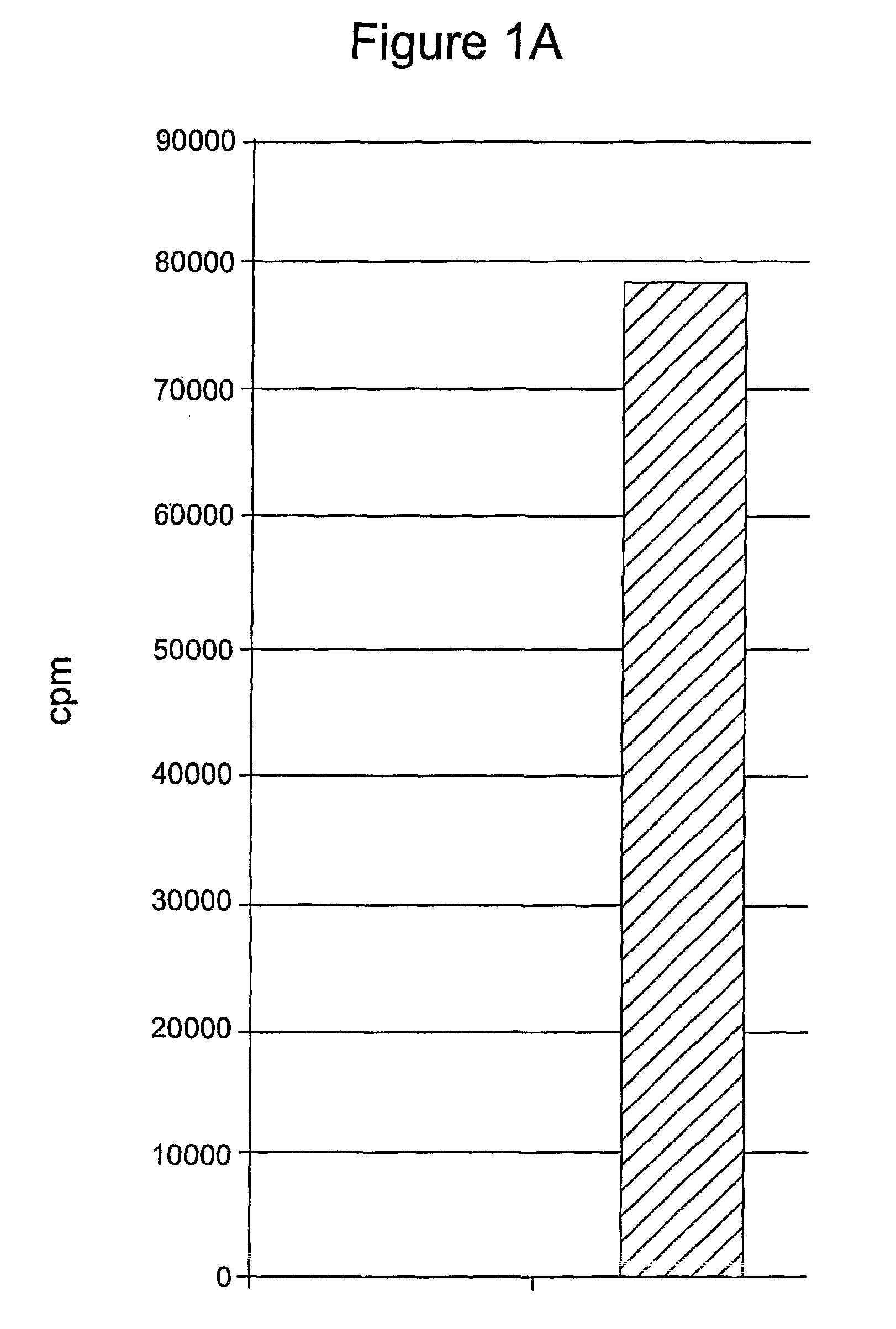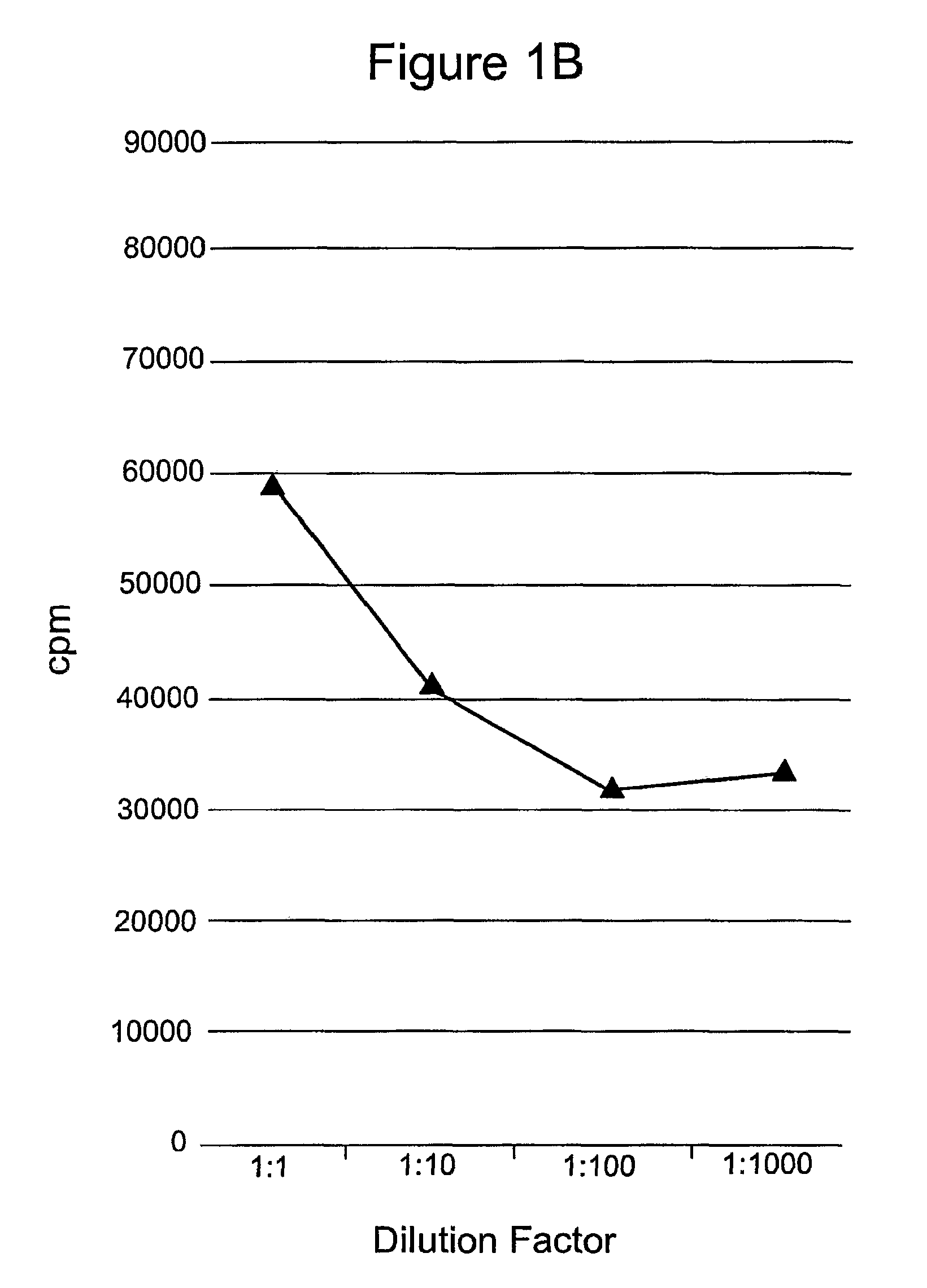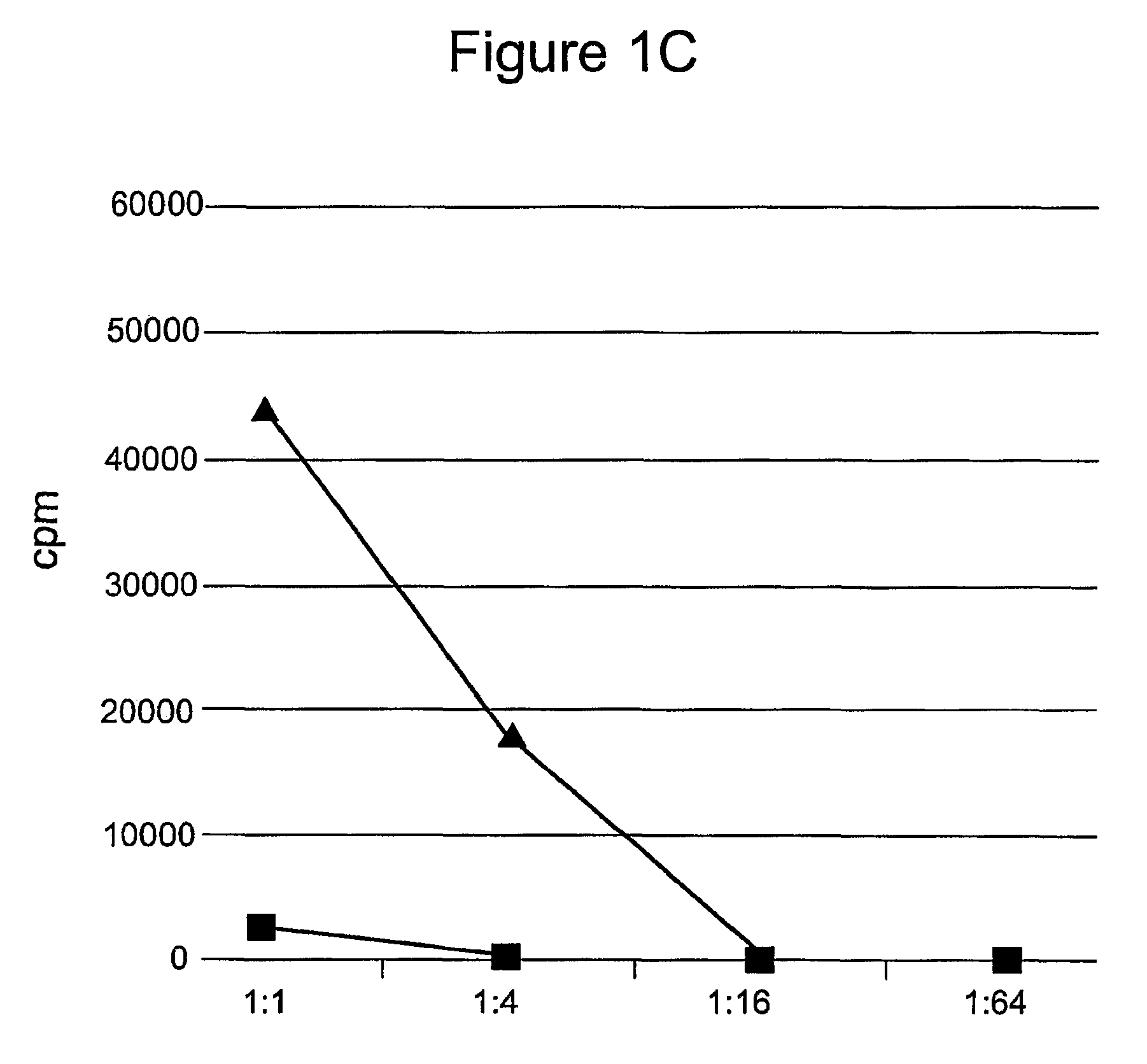Adoptive immunotherapy with enhanced T lymphocyte survival
a technology of immunotherapy and t lymphocytes, applied in the field of t lymphocyte modification, can solve the problems of short-lived, weak immune response, increased number,
- Summary
- Abstract
- Description
- Claims
- Application Information
AI Technical Summary
Problems solved by technology
Method used
Image
Examples
example 1
[0122]This example demonstrates that recombinant polynucleotides with substitution of the IL-15 leader sequence and optimization of IL-15 codons has been used to express IL-15 polypeptide.
[0123]In those cells that express endogenous IL-15, expression is tightly regulated at many levels. A number of features of the IL-15 gene have been recognized that could contribute to this regulation. The 5′ untranslated region of the endogenous IL-15 mRNA is very long with multiple AUG start codons and endogenous IL-15 polypeptides have unusually long, 48 amino acid signal peptides. In addition, 27% of the IL-15 codons are suboptimal. These factors are thought to contribute to the inefficient expression of IL15 and offer opportunities for inventive improvements.
[0124]An IL-15 cDNA, engineered to be downstream of the efficiently secreted preprolactin leader sequence in place of the long IL-15 signal peptide, was cloned into the pMSGV plasmid such that the IL-15 construct was expressed from plasmid...
example 2
[0129]This example demonstrates that recombinant polynucleotides with substitution of the IL-15 leader sequence and optimization of IL-15 codons cloned in a retroviral vector have been used to express IL-15 polypeptide.
[0130]The pMSGV-PPL-IL-15 plasmid was modified by cloning a woodchuck hepatitis virus postranscriptional regulatory element (WPRE) inframe between the preprolactin leader and the wildtype IL-15 sequences to generate pMSGV-PPL-IL-15-WPRE. In addition, a mutated version of the Super-IL-15 sequence, pMSGV-PPL-Super-IL-15 (clone 11), was generated. The pMSGV based plasmids were transfected into 293T cells using the Perfectin reagent and IL-15 production determined using ELISA at 24 and 48 hours after transfection. Control MGSIN and IL-15 mutated pMSGV-PPL-Super-IL-15 (clone 11) transfected cells produced either no or only barely detectable IL-15, while cells transfected with the pMSGV-PPL-IL-15, pMSGV-PPL-IL-15-WPRE, and the unmutated Super-IL-15 construct, pMSGV-PPL-Supe...
example 3
[0133]This example demonstrates that mammalian cells can be transformed with a recombinant polynucleotide to express a cytokine, here IL-15, that enhances the survival of T lymphocytes during the contraction phase of the immune response.
[0134]Phoenix Eco cells were transfected with the IL-15 retroviral vectors and began producing retroviral particles. Retroviral supernatant was harvested and transferred to retronectin-coated plates. PG13 cells were then transduced by the retroviral particles attached to these plates. After 5 days in culture the transduced cells produced IL-15 as determined by ELISA. Bulk PG13 cells transduced with either pMSGV-PPL-IL-15 or pMSGV-PPL-Super IL-15 that were shown to produce IL-15 were then used for limiting dilution cloning. These cells were plated in 96-well plates at dilutions of 3, 1, and 0.3 cells / well. After 10-14 days in culture, wells containing single clones were selected. Cell culture media from the 96-well plate was sampled for IL-15 producti...
PUM
| Property | Measurement | Unit |
|---|---|---|
| concentrations | aaaaa | aaaaa |
| concentration | aaaaa | aaaaa |
| concentration | aaaaa | aaaaa |
Abstract
Description
Claims
Application Information
 Login to View More
Login to View More - R&D
- Intellectual Property
- Life Sciences
- Materials
- Tech Scout
- Unparalleled Data Quality
- Higher Quality Content
- 60% Fewer Hallucinations
Browse by: Latest US Patents, China's latest patents, Technical Efficacy Thesaurus, Application Domain, Technology Topic, Popular Technical Reports.
© 2025 PatSnap. All rights reserved.Legal|Privacy policy|Modern Slavery Act Transparency Statement|Sitemap|About US| Contact US: help@patsnap.com



